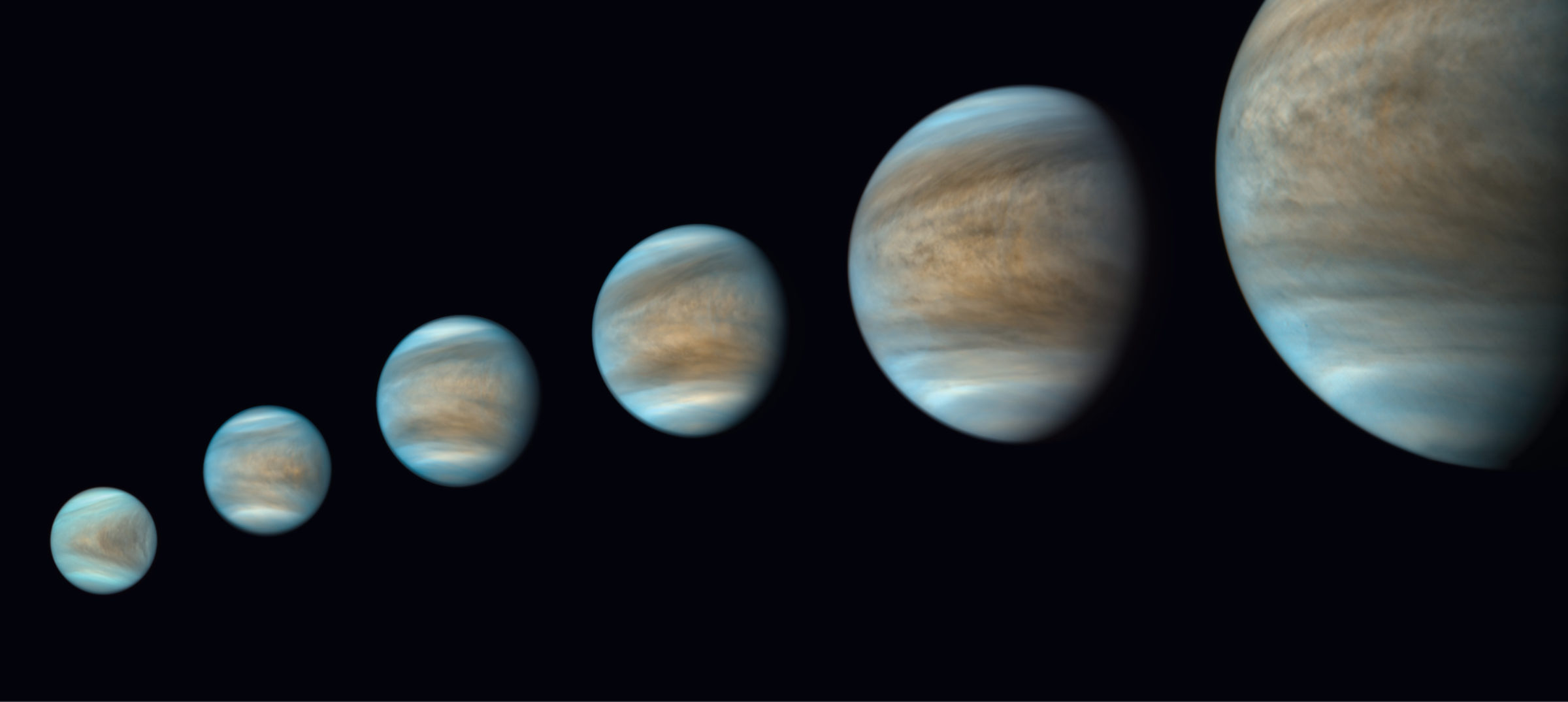Venus, Earth's twin sister
Highlights
- Venus may have had oceans and been habitable to life in the past
- Today, it is an inhospitable place with searing temperatures and crushing pressure
- By studying Venus, scientists learn how Earth-like planets change over time.
Why We Study Venus
Venus is the hottest planet in the Solar System, even though Mercury is twice as close to the Sun and receives four times more solar energy. The reason? Venus’ thick, carbon dioxide atmosphere causes a runaway greenhouse effect. At the surface, Venus has an atmosphere 50 times denser than Earth’s, and average surface temperatures of 470 degrees Celsius (878 degrees Fahrenheit) — hot enough to melt lead.
Venus is currently inhospitable, but it wasn’t always that way. Missions there have observed granite-like rocks that require abundant water to form. In the Solar System's early days when the Sun was cooler, scientists think the planet may have had liquid water on the surface for two billion years. Water is the key to life as we know it, so did Venus once have life?
We don't know how Venus transformed from a potentially habitable world to its current hellish state. By
studying Venus, scientists learn how Earth-like planets evolve and what
conditions exist on Earth-sized exoplanets. Venus also helps scientists
model Earth’s climate, and serves as a cautionary tale on how
dramatically a planet’s climate can change.


Venus Facts
Surface temperature: 440°C (820°F) to 480°C (900°F)
Average distance from Sun: 108 million kilometers (67 million miles), or 38% closer to the Sun than Earth
Diameter: 12,104 kilometers (7,521 miles), Earth is just 5% wider
Volume: 928 billion km3 (223 billion mi3), Venus could fit inside Earth 1.1 times
Gravity: 8.9 m/s², or 90% that of Earth’s
Solar day: 117 Earth days
Solar year: 225 Earth days
Atmosphere: 96% carbon dioxide, 3% nitrogen, 1% other gases
How we study Venus
Venus was the first planet to be visited by a spacecraft. In 1962, NASA’s Mariner 2 flew by the planet and discovered it was a hot world with no self-generated magnetic field. The Soviet Union became the world leader in early Venus exploration after that, sending multiple atmospheric probes and as many as ten landers to the planet. To this day, they remain the only nation to have landed spacecraft on the surface and transmitted both data and images back to Earth.
Due to thick clouds, it is impossible to see Venus’ surface without radar. NASA’s Magellan orbiter, launched in 1990, used radar to map Venus’ surface at the highest resolution to date. Magellan revealed that all of the planet’s impact craters are formed within the last 700 million years. This implies that Venus’ surface was completely reshaped by a worldwide volcanic event in its recent geologic past—but exactly what happened is still up for debate.
Magellan also found no sign of plate tectonics. On Earth, plate tectonics is a process in which sections of the planet’s outer crust glide over the mantle — the rocky inner layer above the core — allowing heat to escape through volcanism. Since we think Venus’s interior is similar to Earth's, the lack of plate tectonics means that volcanoes on Venus must work differently than on Earth.
The European Space Agency launched the Venus Express orbiter in 2006. By observing hotspots on the surface and changing sulfur dioxide levels
in the atmosphere over six years, the spacecraft collected the best
evidence yet of active volcanism on Venus. Venus Express also discovered
granite-like rocks across the planet that require abundant liquid water
to form, solidifying the idea of the planet having past oceans.
Japan’s Akatsuki spacecraft is the only probe currently orbiting
Venus. It studies Venus’ atmosphere in frequencies of light that human
eyes cannot see, which helps scientists paint a better picture of what’s
happening above the planet’s surface. These images can be processed to create beautiful enhanced-color pictures of the planet.

Upcoming Venus missions
🪐 India aims to launch a Venus orbiter called Shukrayaan in December 2024 equipped with a radar and infrared camera to map the surface. It will have a payload capacity of about 100 kilograms and study Venus for four years from a polar orbit of 200 x 600 kilometers. The spacecraft will carry both Indian and international science instruments. One, called VIRAL (Venus Infrared Atmospheric Gases Linker), will be co-developed by the French and Russian space agencies.
🪐 NASA's DAVINCI mission will launch no earlier than 2029. It consists of an orbiter and an atmospheric descent probe. The probe will make high precision
measurements of trace gases in Venus’ atmosphere, helping firmly
determine how much water Venus’ oceans had and how long they existed.
🪐 NASA's VERITAS orbiter will launch no earlier than 2031. It will have a radar instrument with up to 100 times higher resolution than Magellan. This will give scientists a better handle on Venus’ geology and evolution and also reveal why the planet lacks large-scale plate tectonics.
🪐 The European Space Agency's EnVision mission will launch no earlier than 2031. The orbiter will provide a
comprehensive view of Venus, from the core all the way to its upper
atmosphere.
Acknowledgements: This page was initially written by Jatan Mehta in 2020.


 Explore Worlds
Explore Worlds Find Life
Find Life Defend Earth
Defend Earth

